Paul Schomer- schomer@schomerandassociates.com
Schomer & Associates
Champaign, IL 61821
Popular version of paper 3pAA4
Presented Wednesday afternoon, November 12, 2003
146th ASA Meeting, Austin, TX
INTRODUCTION
Statement of Problem
On the evening of November 21, 1991, a NJ State Trooper gave chase to an automobile described by the officer as "driving erratically." The subject drove down the road into the drive of a house, and ran off on foot into a forested field as shown in Figure 1 (1991 aerial photo). The trooper followed, parked his patrol car, and gave chase on foot. Subsequently, the trooper apprehended the individual in the field after a scuffle.
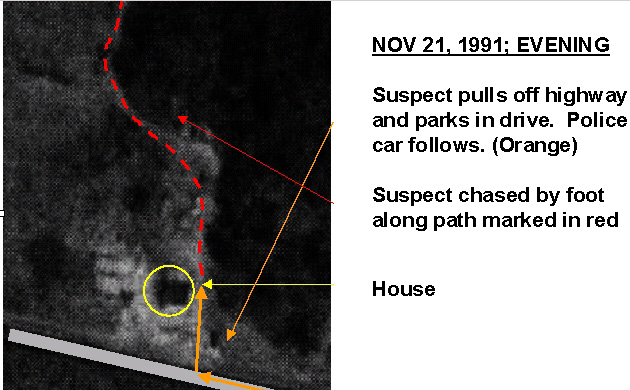
Figure 1. The chase.
The subject later sued the NJ State Police claiming, among other matters, that
the trooper had shot at him. Witnesses in the home by the driveway, who were
relatives of the subject, testified that they heard the gunshot. I was retained
to review, examine, and analyze the audibility and detectability of the alleged
gunshot sound inside the residence.
Approach
The first step in this analysis is to understand the site and establish the locations of the alleged gunshot and those hearing the gunshot noise. On October 15, 1996, I visited the residence, which is west of Millville, NJ on state Route 49. With permission of the owner of the site, I walked and examined the house exterior and kitchen interior, outbuildings exterior, travel trailers exteriors, and entire grounds where this incident was alleged to have occurred. I was supplied with an aerial photograph of the site, pictures taken the day after the alleged incident by the police, and deposition transcripts of the plaintiff (the subject) and the defendant (the State Trooper). I also took my own photographs of the site.
To perform this type of analysis one needs to answer a series of questions:
1. Where was the alleged source (its location on the aerial photograph)?
2. Where were those that allegedly heard the gunshot sound? (the receivers)
3. What was the direction of fire of the alleged shot?
4. How much noise (sound energy) does a 9-mm pistol (the trooper's handgun) make?
5. How does the pistol sound change with direction?
6. How would the sound decay as it traveled from the source to the receiver?
7. How would the witnesses home reduce the sound that could be heard inside?
8. How would TV sound affect a witnesses ability to hear a gunshot sound?
9. What was the likelihood that these witnesses could have heard the alleged gunshot sound?
ANALYSIS
Source and Receiver Positions (Questions 1, 2 and 3)
From the site visit and the depositions, I conclude that the alleged gunshot, if it occurred, was somewhere along the line indicated on Figure 2. Also, the direction of fire had to be along this line and away from the house. The end of this line that is closest to the residence in question is about 120-m north-northeast of the residence and along the east edge of the open field. The end of this line that is farthest from the residence is about 220-m. north-northeast of the residence and more towards the east-west middle of the field. The primary analysis was performed for nearer end (120 m) so that the calculated sound would be the loudest and my analysis would be conservative. The two witnesses were inside the house. One was in the living room listening to TV and the other was in an upstairs bedroom that faced the field. According to the witnesses, the windows and doors of the house were closed.

Figure 2. This figure shows the line (red arrow) along which the alleged firing took place, the path of any gunshot sound through the dense foliage, the house, and the nearby travel trailers.
9-mm Pistol Sound (Questions 4 and 5)
I used measured US Army gunshot sound data for a 9-mm pistol. The data I had were for 30, 90 and 150 degrees with respect to the line-of-fire which, in this case, was straight away from the house (180 degrees). So I extrapolated the Army data to 180 degrees.
Sound decay from the alleged firing site to the house (Question 6)
Several factors affect the decay of sound with distance. In addition to the distance itself, the ground surface (soft like a field or hard like cement), the wind direction, dense foliage, and sound barriers all affect the decay of sound.
Distance, ground surface, and wind
As noted above, the shortest possible distance from gunshot to the house was 120 m. The ground surface was clearly "soft." The wind direction was determined from US Weather Bureau records. Figure 3 shows the wind direction in all of NJ for November 21; November 22, 1991 was very, and, if anything, more southerly. Basically, the wind was predominantly from the house to the alleged firing location. Under these conditions, upwind and soft ground, sound decays the most rapidly with distance of any conditions. I used a US Army sound decay computer program to predict the sound decay under these conditions.
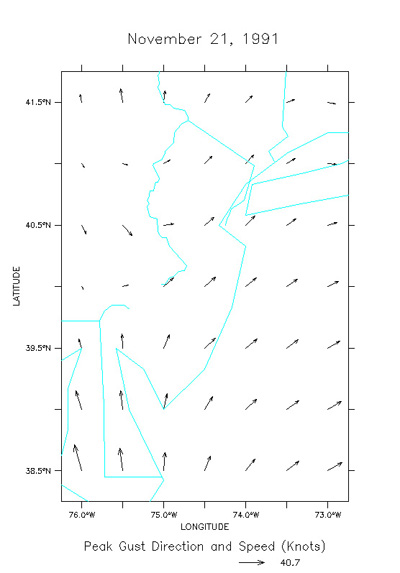
Figure 3. Peak Gust Wind Speed and Wind Direction for the State of New Jersey on November 21, 1991
Dense foliage
Figure 2 shows that the alleged gunshot sound would have to travel through dense foliage for about 90 m. Figure 4 is looking toward the house. The foliage to the left is the forest in question and one can see that it is evergreen, and thus had its "leaves" in November, and that it was dense. Published data give the sound decays by a 90-m of dense foliage as 5 to 15 decibels. I used the most conservative number in my calculations--5 decibels of decay by the foliage.
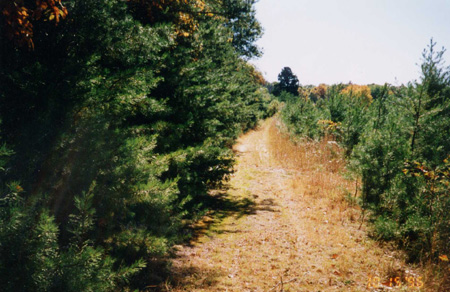
Figure 4. Dense evergreen foliage to the left (looking toward house) that the sound had to pass through.
Sound Barriers
Photos taken in 1991 by the trooper and his testimony report two travel trailers in the backyard of the house. The aerial photos taken in 1991 (Figure 2) shows two objects having approximately the same sizes and positions, respectively, of the travel trailers currently on the property as shown in Figure 5. These form a partial barrier to sound that can travel from the alleged gunshot location to the house. In addition sound to the first floor front (living room) had to go around the house to the side door (Figure 6), so the corner of the house itself adds an additional sound barrier. I used a minimal value of 5 decibels for the attenuation of these two barriers (the trailers and the house edge) together.
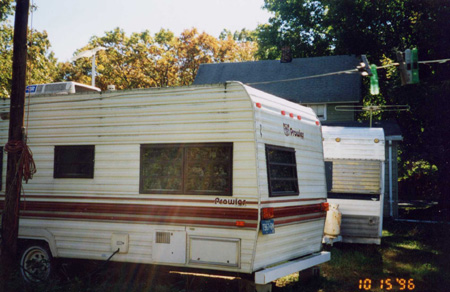
Figure 5. Trailers in yard that partially blocked sound from reaching the house. Picture is along the line from the alleged firing area to the house.
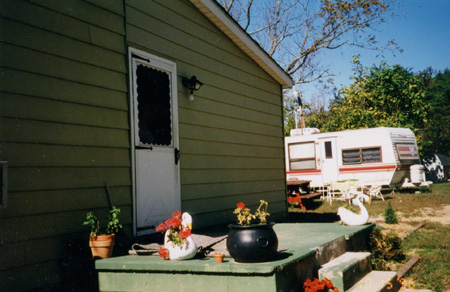
Figure 6. Side door of house shield from sound by corner of house
Sound reduction by the house walls and windows
Sutherland (1978) gives values for reduction of sound from outdoors to indoors of houses. Meloni (1995) gives the same type of predictions for houses with double pane windows. The Meloni attenuation predictions are much larger than the Sutherland predictions. Even though this house appeared to be well built in terms of shielding sound and had storm windows and storm doors, for this analysis I used the smaller, more conservative Sutherland predictions for the reduction of sound from the outside to inside the house. The upstairs bedroom contains only one small window, which faces the field (Figure 7). This room is further shielded by the roofline of part of the first floor of the structure. Therefore, as suggested by Sutherland, I increased the effective attenuation for just this room by 5 dB.
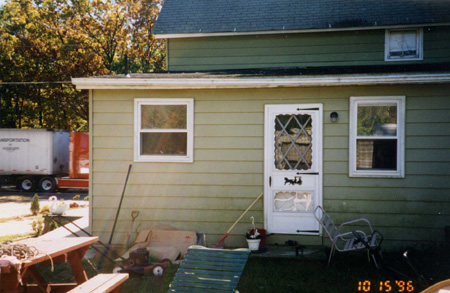
Figure 7. Small, upstairs window. Room shielded from sound by enclosed porch roof line.
RESULTS
The results of my calculations show that the alleged gunshot would have produced an A-weighted maximum (fast) sound level of 25 dB (the A-weighted level approximates human hearing). This predicted indoor maximum A-weighted, fast sound levels of 25 dB(A) is extremely low. To understand the magnitude of these levels, Figure 8 shows the relative loudness of the predicted indoor alleged gunshot sound compared to other common sounds.

Figure 8. Relative Loudness of Various Sounds. A doubling of height on the chart represents a doubling of loudness. On this chart an extremely quiet room has a loudness of 1.
As yet another comparison, I have tested over 300 human subjects for their response to gunshot noise. With 5 subjects in a test room, the lowest sound level that could be used and still have the subjects reliably hear the sounds was about 37 dB(A). These test rooms had no TV, radio or other sources of loud sounds, and subjects were instructed to remain quiet and listen for these sounds. One set of test structures had no forced-air ventilation and the other set of test structures used for these studies had a specially quieted-forced air ventilation system.
The predicted level of the alleged gunshot in this case was less than 25 dB(A), an extremely quiet level which is less that 1/2 as loud as the quietest sound that could be used in human response testing in quiet rooms with subjects listening for the sound. In the witnesses' house, the TV was on and other normal noise-producing equipment such as refrigerators and heating systems also were on. Moreover, the witnesses were not concentrating on listening for a known sound.
CONCLUSIONS
Thus, I concluded that the witnesses in this house on the night in question could not have heard a gunshot sound emanating from the field behind the house. The jury agreed and found for the defendant.
REFERENCES
Meloni, Tommaso and Allan Rosenheck, (1995). "Choice of frequency weighting for the evaluation of weapon noise," Journal of the Acoustical Society of America, 97(6), 3636-3641, June 1995.
Sutherland, Lou C., (1978). "Indoor Noise Environments Due to Outdoor
Noise Sources," Noise Control Engineering Journal, 11(3), 124-137,
November/December 1978.